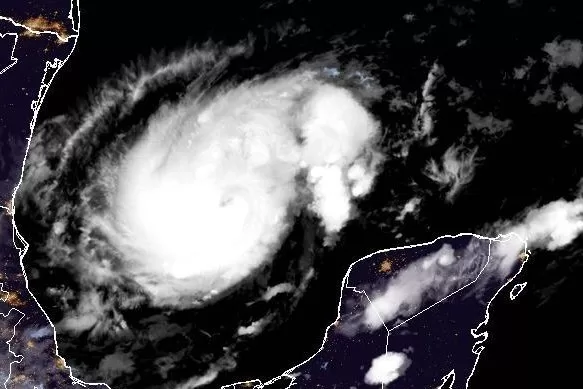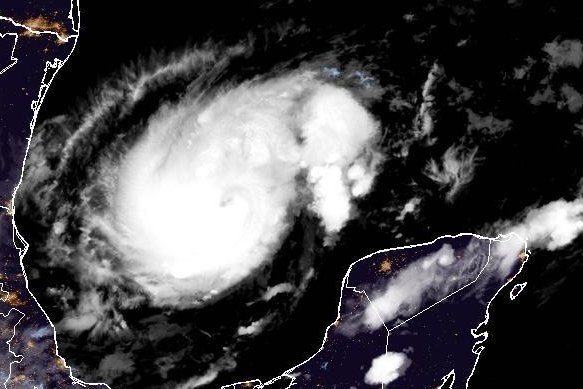Hurricane Milton was continuing to strengthen Sunday night in the Mexican Gulf. It is forecast to make landfall along Florida’s west coast midweek. Image courtesy of NOAA
Oct. 7 (UPI) — Hurricane Milton was continuing to strengthen Sunday night in the Gulf of Mexico as it inched toward a midweek landfall along the west coast of Florida, where residents are still reeling from the impacts of Hurricane Helene, a Category 4 storm that hit the state 10 days ago.
In its 10 p.m. CDT update, the National Hurricane Center located Milton about 230 miles west-northwest of Progreso, Mexico, and 765 miles west-southwest of Tampa, Fla.
It was moving east at 7 mph with maximum sustained winds of 90 mph, making it a Category 1 storm on the Saffir-Simpson scale. Forecasters are warning that it will be a “major hurricane” by the time it makes landfall around Wednesday along Florida’s west coast.
“Milton is forecast to move just north of the Yucatan Peninsula and across the southern Gulf of Mexico on Monday and Tuesday and approach the west coast of the Florida Peninsula by Wednesday,” the NHC said.
In a discussion on the storm, the NHC noted that Milton should strengthen over the next few days into a Category 4 hurricane, with winds between 130 and 156 mph.
While forecasters are stating that it is too soon to specify the exact strength of the storm at landfall, or pinpoint its exact landfall location, the NHC warned of “an increasing risk of life-threatening storm surge and damaging winds for portions of the west coast of Florida,” beginning early Wednesday, with heavy rainfall to start Monday.
A hurricane watch and a tropical storm warning have been called for northern Yucatan Peninsula from Celestun to Cabo Catoche.
Portions of the Florida Peninsula and the Keys are to receive between 5 and 10 inches of rain, with some areas to receive up to 15 inches, through Wednesday night, raising the risk of “considerable flash, urban and areal flooding,” the NHC said.
The Florida Division of Emergency Management is preparing for the largest evacuation since 2017, Director Kevin Guthrie said at a news conference with Gov. Ron DeSantis on Sunday.
Schools in Hillsborough County, Pinellas County and Pasco County will be closed and other activities have been canceled from Monday through Wednesday as a precaution. Hillsborough County Schools could be converted into evacuation shelters.
Other local areas are also making provisions for Milton while still trying to clean up from Hurricane Helene, which killed hundreds of people, caused widespread damage and power outages across the entire southeastern United States.
“I urge Floridians to finalize your storm preparations now, enact your plan. I highly encourage you to evacuate,” Guthrie said.
DeSantis declared a state of emergency in 51 of the state’s 67 counties, including metro areas of Tampa-St. Petersburg, Miami-Fort Lauderdale-West Palm Beach and Orlando.
DeSantis warned at a news conference Sunday that after making landfall on Florida’s west coast, Milton could move east across Central Florida.
“You’re going to have the storm going right across, potentially I-4 or certainly in the center part of the state somehow, and that is going to cause damage,” DeSantis said.
“That’s going to generate debris, it’s going to cause potential damage to infrastructure. So just be prepared for that and do what you need to do to be able to execute your plan.”
All assets deployed to North Carolina for Helene are returning to Florida.
Florida’s west coast has already been hit by two hurricanes this season.
Hurricane Helene hit the coast near Perry in the Big Bend Region on Sept. 26 as a Category 4 storm.
Hurricane Debby hit nearby Steinhatchee as a Category 1 storm on Aug. 5.
Milton, the 13th named storm of the Atlantic hurricane season, is one of three churning in the Atlantic, but is the only posing a threat to land. The other two are: Kirk, a Category 3 storm; and Leslie, which became a hurricane late Friday.

